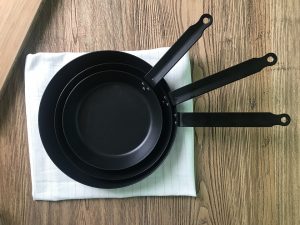
Consisting of iron with more than 2% carbon, cast iron is a versatile metal that’s used in a wide range of consumer and commercial applications. It’s been around since the 5th century B.C., during which cast iron was used to make weapons as well as agriculture products. Since then, it’s become an increasingly common type of metal. While all cast iron has a carbon content of over 2%, though, there are several different types of cast iron, each of which is unique.
#1) Gray Cast Iron
The most common type, gray cast iron features a graphite microstructure consisting of many small fractures. It’s called “gray cast iron” because the presence of these small fractures creates the appearance of a gray color. When gray cast iron is produced, the fractures open up to reveal the gray-colored graphite underneath the surface. Gray cast iron isn’t as strong as steel, nor is it able to absorb the same shock as steel. With that said, gray cast iron offers similar compressive strength as steel. As a result, it’s become a popular choice of metal for applications involving compressive strength.
#2) White Cast Iron
While not as common as gray cast iron, white cast iron is another type worth mentioning. It receives its namesake from its off-white color, which is the result of iron compounds known as cementite. Like gray cast iron, white cast iron features many small fractures. The difference is that white cast iron features cementite below its surface, whereas gray cast iron features graphite below its surface. The graphite creates the appearance of a gray color, while the cementite creates the appearance of a white color. White cast iron is hard and offers excellent resistance against abrasions.
#3) Ductile Cast Iron
Also known as nodular cast iron, ductile cast iron is a type of soft, ductile iron alloy with a high carbon content. It’s typically made with trace amounts of other compounds, including magnesium and cerium. When added, these trace compounds inhibit the speed at which graphite grows, thereby keeping the metal soft and ductile. Ductile cast iron was invented in the early to mid-1940s.
#4) Malleable Cast Iron
Finally, malleable cast iron that easily “workable.” It’s typically created using heat treatment processes on white cast iron. The white cast iron is heated treated for up to two days, after which it’s cooled. When finished, malleable cast iron can be bent and manipulated to achieve unique shapes and sizes.
